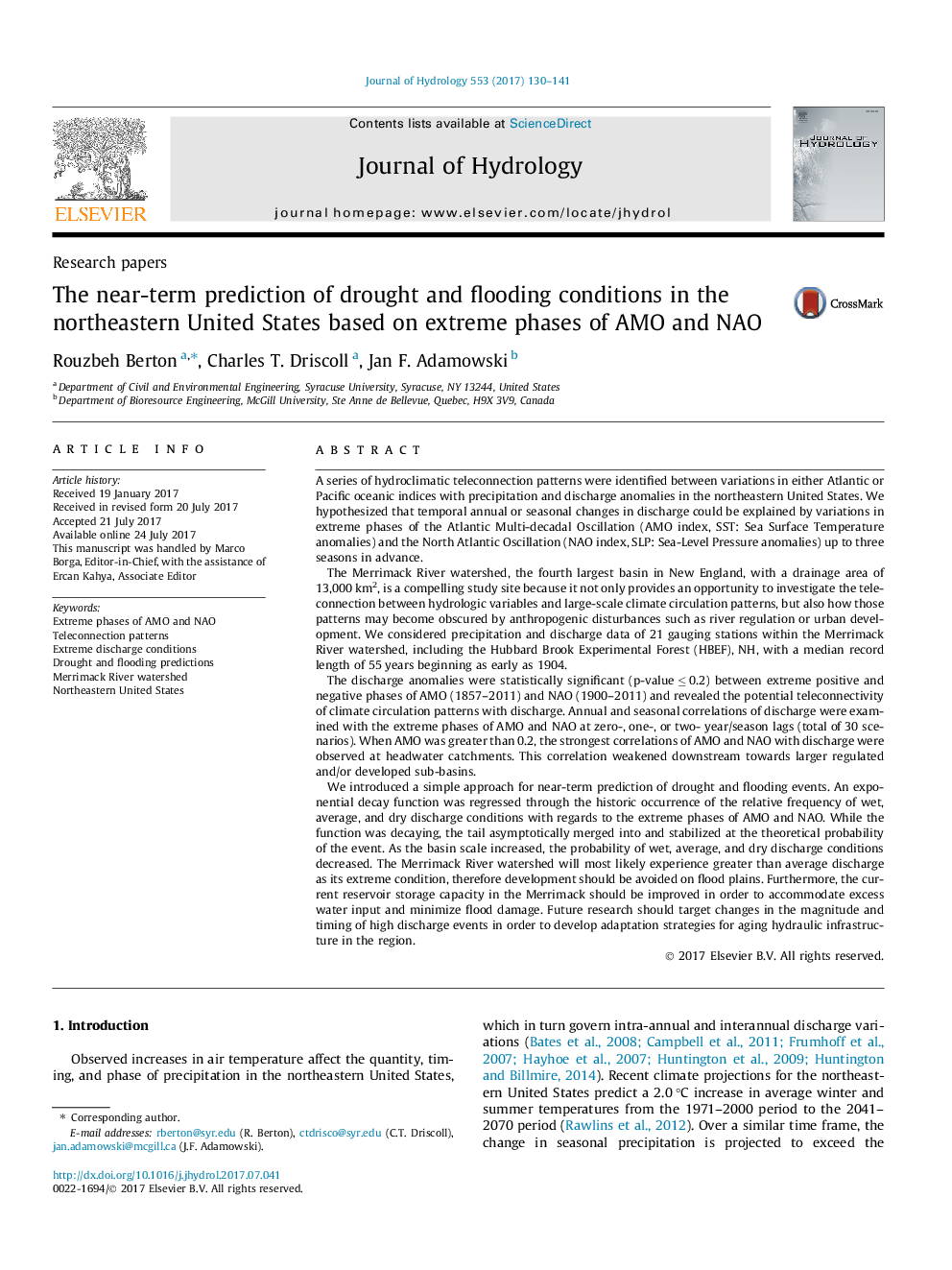| Article ID | Journal | Published Year | Pages | File Type |
|---|---|---|---|---|
| 5770806 | Journal of Hydrology | 2017 | 12 Pages |
â¢Dependency of AMO and NAO teleconnection with Northeast hydroclimate to season and basin scale.â¢Stronger teleconnection patterns at headwater catchments than downstream basins.â¢Confounded teleconnection patterns at regulated and/or developed basins.â¢Introduced a simple approach for near-term prediction of drought and flooding.â¢A reduction in the probabilities of wet, average, and dry discharge conditions with increases in basin scale.
A series of hydroclimatic teleconnection patterns were identified between variations in either Atlantic or Pacific oceanic indices with precipitation and discharge anomalies in the northeastern United States. We hypothesized that temporal annual or seasonal changes in discharge could be explained by variations in extreme phases of the Atlantic Multi-decadal Oscillation (AMO index, SST: Sea Surface Temperature anomalies) and the North Atlantic Oscillation (NAO index, SLP: Sea-Level Pressure anomalies) up to three seasons in advance.The Merrimack River watershed, the fourth largest basin in New England, with a drainage area of 13,000 km2, is a compelling study site because it not only provides an opportunity to investigate the teleconnection between hydrologic variables and large-scale climate circulation patterns, but also how those patterns may become obscured by anthropogenic disturbances such as river regulation or urban development. We considered precipitation and discharge data of 21 gauging stations within the Merrimack River watershed, including the Hubbard Brook Experimental Forest (HBEF), NH, with a median record length of 55 years beginning as early as 1904.The discharge anomalies were statistically significant (p-value â¤Â 0.2) between extreme positive and negative phases of AMO (1857-2011) and NAO (1900-2011) and revealed the potential teleconnectivity of climate circulation patterns with discharge. Annual and seasonal correlations of discharge were examined with the extreme phases of AMO and NAO at zero-, one-, or two- year/season lags (total of 30 scenarios). When AMO was greater than 0.2, the strongest correlations of AMO and NAO with discharge were observed at headwater catchments. This correlation weakened downstream towards larger regulated and/or developed sub-basins.We introduced a simple approach for near-term prediction of drought and flooding events. An exponential decay function was regressed through the historic occurrence of the relative frequency of wet, average, and dry discharge conditions with regards to the extreme phases of AMO and NAO. While the function was decaying, the tail asymptotically merged into and stabilized at the theoretical probability of the event. As the basin scale increased, the probability of wet, average, and dry discharge conditions decreased. The Merrimack River watershed will most likely experience greater than average discharge as its extreme condition, therefore development should be avoided on flood plains. Furthermore, the current reservoir storage capacity in the Merrimack should be improved in order to accommodate excess water input and minimize flood damage. Future research should target changes in the magnitude and timing of high discharge events in order to develop adaptation strategies for aging hydraulic infrastructure in the region.
